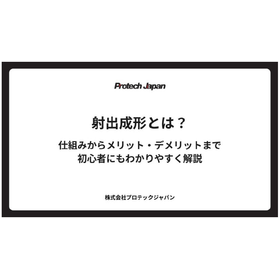Solving the challenges of silicone (silicon) release agents with silicone coatings.
MRS coating
We will solve the challenges of silicone (silicon) release agents with silicone coatings!
■What is a release agent? In the industrial field, a release agent is known as a substance applied to improve the separation of molded products from molds. In a broader sense, substances like the flour used to prevent soba noodles from sticking during preparation can also be referred to as release agents. ■Silicone (Silicon) Release Agents Release agents used for molds include silicone and fluorine, depending on the material and conditions. In addition to facilitating mold release, release agents must also have properties that make them resistant to degradation from heat during molding and minimize contamination of the mold. Silicone has high heat resistance and is less likely to degrade with repeated heating during molding. Additionally, due to its low surface tension, it has good wettability on molds, allowing it to reach every corner of the shape, which is one reason it is commonly used as a release agent. ■Release Agents and Coatings In addition to release agents, coatings can also provide release effects. While release agents are an easy means of achieving mold release, they can impose burdens on the working environment, complicate mold cleaning, and lead to variations in the amount applied by workers, potentially negatively affecting the final product. In such cases, release coatings may offer solutions to these challenges. ▼For more details, please see here.
Inquire About This Product
Related Videos
basic information
"MRS Coating" (Silicone Coating) [Introducing a part of the lineup] ■MRS-102 Remains effective even after cleaning with solvents. ■MRS-014 Maintains thinness like a blade and shapes such as squeezing. ■MRS-004 Heat resistance exceeding 200°C, comparable to fluororesin (Release even after 16 hours at 350°C). ■MRS-200 Can be heated to resin and rubber products at temperatures below 80°C. *For more details, please download the PDF or contact us.
Price range
Delivery Time
Applications/Examples of results
■Examples of Processing Applications <Coating Function> ◆Adhesive Paper Transport Roll - Prevents adhesive from sticking to the roll <Cleanability> <Release Properties> <Smoothness> ◆Film Cutting Table - Prevents sticking to the support surface <Cleanability> <Release Properties> <Smoothness> ◆Measuring Cup - Prevents adhesion (residue) of measured materials <Cleanability> <Water Repellency> <Smoothness> ◆Sandwich Cutting Blade - Prevents sticking to the blade <Cleanability> <Release Properties> <Thin Film>
catalog(1)
Download All CatalogsNews about this product(1)
Company information
To maximize the performance of manufacturing equipment and machine parts, Yoshida SKT derives the "optimal solution" tailored to our customers from hundreds of surface treatment technologies. - Decreased productivity due to adhesive troubles - Instability in product quality due to friction - Early deterioration of equipment due to corrosion We respond to these challenges in the manufacturing field with our extensive track record and reliable technical expertise. In 1963, we began fluoropolymer processing. In 1968, we signed a licensing agreement with DuPont (now Chemours), supporting manufacturing innovations for over 2,000 customers across various industries, from automotive to medical and aerospace. Furthermore, in 2024, we are focusing on the development of next-generation products, such as PFAS-free coatings, contributing to the advancement of sustainable manufacturing. With a three-base system in Nagoya, Tokyo, and Yamaguchi, we flexibly respond to both mass production and custom orders. Our consistent quality management system ensures that we deliver reliable quality. For solving challenges in the manufacturing field, trust the surface treatment experts at Yoshida SKT.





![[Surface Treatment Solution Case] Improved Extrusion Molding Troubles of Elastomers!](https://image.mono.ipros.com/public/product/image/ced/2000689387/IPROS26005042464022361081.png?w=280&h=280)

![[Food Industry Case Study] Surface Treatment of Measuring Cups for Draining Whipped Cream](https://image.mono.ipros.com/public/product/image/ffe/2000612389/IPROS58439438773118972499.png?w=280&h=280)




